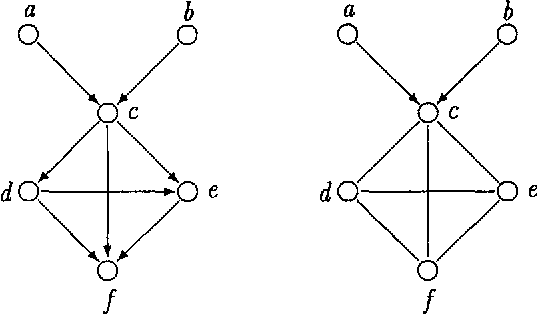Bayesian Networks from the Point of View of Chain Graphs
Paper and Code
Jan 30, 2013


AThe paper gives a few arguments in favour of the use of chain graphs for description of probabilistic conditional independence structures. Every Bayesian network model can be equivalently introduced by means of a factorization formula with respect to a chain graph which is Markov equivalent to the Bayesian network. A graphical characterization of such graphs is given. The class of equivalent graphs can be represented by a distinguished graph which is called the largest chain graph. The factorization formula with respect to the largest chain graph is a basis of a proposal of how to represent the corresponding (discrete) probability distribution in a computer (i.e. parametrize it). This way does not depend on the choice of a particular Bayesian network from the class of equivalent networks and seems to be the most efficient way from the point of view of memory demands. A separation criterion for reading independency statements from a chain graph is formulated in a simpler way. It resembles the well-known d-separation criterion for Bayesian networks and can be implemented locally.
 Add to Chrome
Add to Chrome Add to Firefox
Add to Firefox Add to Edge
Add to Edge